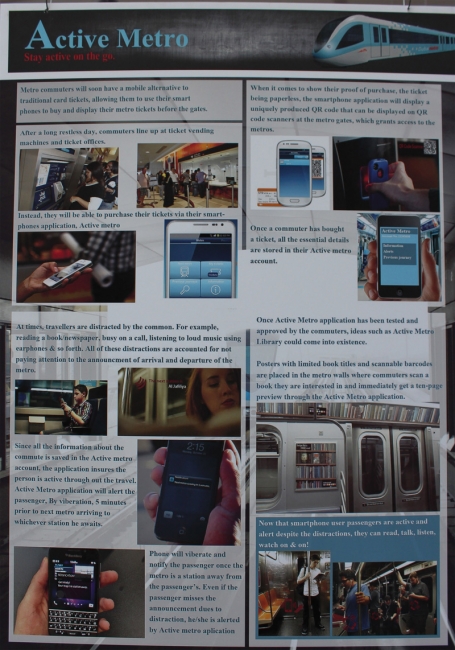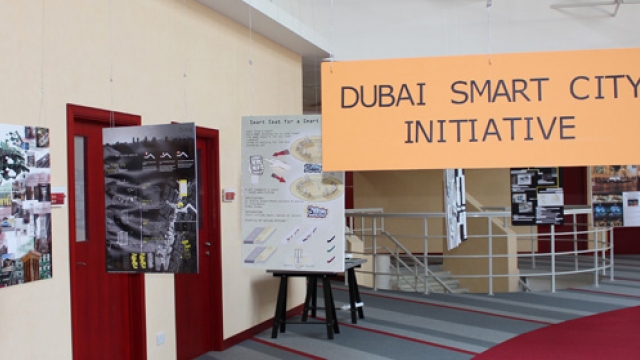Canadian University Dubai students inspired by Smart City vision
[[{"fid":"7954","view_mode":"default","fields":{"format":"default"},"type":"media","attributes":{"style":"width:590px","alt":"Architecture and Interior Design Exhibition 2013","class":"media-element file-default"}}]]
DUBAI, December 16, 2013: Students at the Canadian University Dubai have used Dubai's Smart City initiative as inspiration to come up with ingenious ways to improve the city through the use of technology.
Smart City, an initiative announced earlier this year by Sheikh Mohammed bin Rashid, Vice President and Ruler of Dubai, plans to increase Wi-Fi penetration across the entire city, presenting a myriad of opportunities for Dubai residents to interact with their environment thanks to creative technological solutions.
A bike riding reward system, sustainable buildings and a mobile app that alerts you when you arrive at your Metro stop, have all been tackled by third year students at the university.
Zain Javaid, 18, has developed an idea called Active Metro which alerts passengers on Dubai Metro when they are coming to their stop.
"I ride the Metro all the time and when you're with your friends or when you are reading or listening to music, you don't really pay attention to your journey," he said. "I've missed my stop quite a few times and I thought it was problem that needed a solution.
"You buy your e-ticket which is scanned on the way into the Metro. The scanner sends the information about your journey to the app which alerts you as you reach your stop. It's a simple idea, but I think people will find it useful."
Taking a different technological tack are two architecture students that have designed a sustainable data centre.
"Everything in a Smart City is linked to a data centre. Without the data centre, you cannot have a Smart City," said Khadeeja Tul Kubra. "The problem is that they use a lot of electricity because the servers need to be air conditioned and dehumidified.
"The design concept is yin and yang. It illustrates the interdependency of the data centre and the Smart City and the curved shape allows more sunlight to hit the building which is great for solar panels. We left a gap between the two halves of the symbol to encourage more wind-flow to naturally cool the building."
Naureen Zulfiquar added: "The materials we have used contribute to the sustainability of the building. We have used potassium silicate paints and both the standard black solar panels and also white solar panels. These not only help the building sustainability, but also the aesthetics."
Steve Denyer, assistant professor at the School of Architecture and Design, said: "It has been a very interesting project for the students and it has been gratifying to see how each of them has tackled the vision of a Smart City."


